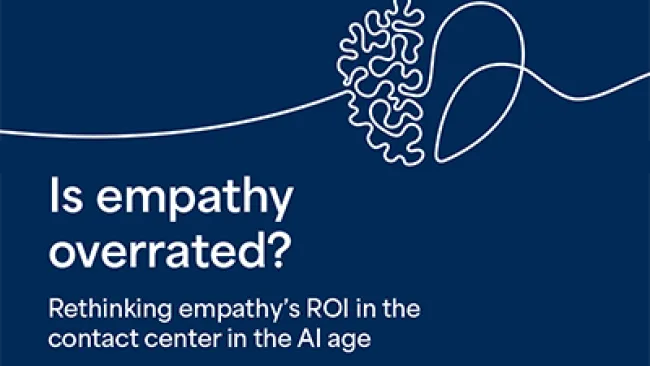Loyalty depends upon how banks treat customers when they interact with the organization. Free checking and low interest rates no longer dictate competitive advantage. But, when it comes to launching the seamless experiences customers now expect, financial institutions must face the music—they’re failing miserably.
However, many banks are in denial, as they continue to believe in so-called truths that are far from fact. Here are six lies banking leaders think are true and how they compare to today’s reality:
Lie 1: It’s Different—We’re a Bank
Customers don’t think in terms of industries or markets. Instead, these individuals focus on relationships and trust. Therefore, when customers compare their current banking experience to the competition, they often base these judgments on other leading brands, such as Apple, Google, Amazon, and Uber. Though this may not seem fair, it’s not up to banks to decide. The aforementioned companies offer consumers an innovative way of doing business in today’s “Experience Economy” and it’s here to stay, which means all companies across all industries must step up their game by reinventing business models to satisfy evolving consumer expectations.
Lie 2: Mobile Is Just an Extension of Our Website
While this statement might’ve been true upon the introduction of the smartphone, the app economy upended this way of thinking. Customers now expect mobile applications to provide more personalized information beyond the standard mobile-friendly version of the bank’s traditional website. Biometric authentication, voice authentication, and geo-location services, for instance, offer customers more secure, customized experiences that websites were never meant to accomplish. Of course, banking customer service leads will have to alter operations, bringing in the expertise of an external mobile agency to develop an effective customer experience strategy, but when done right, these apps can serve as powerful relationship-building tools.
Lie 3: Customers Leave Because of Better Fees and Rates
Ernst & Young’s Global Banking Survey expressly highlights that banking experience—treatment in the contact center, branch, or the mobile experience—stands as the number one reason customers leave their current bank. Each of these individuals wants to be treated as a valued customer, whether they’re interacting with the bank in real time or accessing its mobile app. The clear surge in community banks and local credit unions further supports this desire that customers want the white-glove treatment. They want associates to know who they are and treat them like individuals, not numbers. Integrating new technologies, such as live associate chat and video chat, also empowers customers to choose how they engage, thereby demonstrating their overall value to the bank and providing them with differentiated experiences without sacrificing the quality of service.
Lie 4: This Data Only Applies to Millennials
Banks often assume that new technologies apply primarily to Millennials. Nonetheless, people over 55 years of age are some of the fastest growing adopters of smartphone technology today. Plus, Boomers are new to the scene, so they’re not jaded by previously poor Web or mobile banking experiences. Banks have an ideal opportunity to prove themselves to this growing, highly desirable, high net income age group. Yet banks shouldn’t disregard Millennials. After all, Viacom’s Millennial Disruption Index indicates that 71 percent of this younger demographic would rather go to the dentist than listen to what banks are saying. Make sure subsequent CX efforts apply to all age groups.
Lie 5: That’s Not My Department
As the lines between who “owns” the banking customer experience begin to blur, financial institutions must ask themselves one question: Who wakes up in the morning thinking this is their job? Traditionally, online experiences have been connected to the branch, which has to be connected to the mobile app, which must be in sync with the contact center and financial advisors. Thus, banks must also ask themselves where their resources are focused and if their future investments have shifted to satisfy new customer expectations. Ultimately, customers are now five times more likely to visit their bank’s online site, mobile app, or ATM. Has your bank shifted at least five times its customer service, customer experience, and marketing resources to accommodate these new preferred channels?
Lie 6: This Is for the Next Person to Solve
The “wait and see” mentality cannot persist. Which bank will be the first to step up its game? Which institution will become the next Simple, Ally Bank, or Lending Tree? Patience seems to be wearing thin, especially among younger generations, as nearly half of these customers have given up on expecting innovation to come from inside a bank. Instead, customers are counting on some new tech start-up to come along and overhaul the way banks work. But, with the truth now in hand, financial institutions have the power and insight to prove these naysayers wrong.
Consumer expectations are changing, and the business models, capabilities, and practices of the financial services industry must change with them. Forward-thinking banking organizations are realizing clear business gains that can be derived from maximizing customer satisfaction.
As we go into 2016, financial institutions must craft thoughtful omnichannel communication strategies that reach customers across their banking journeys, provide personalized experiences, and ensure their data is secure. Only then will retail banks begin to realize the financial gains of customer satisfaction and loyalty.
Also, check out the most recent issue of our eNewsletter.
Six Lies About the Retail Banking Customer Experience—Debunked!















